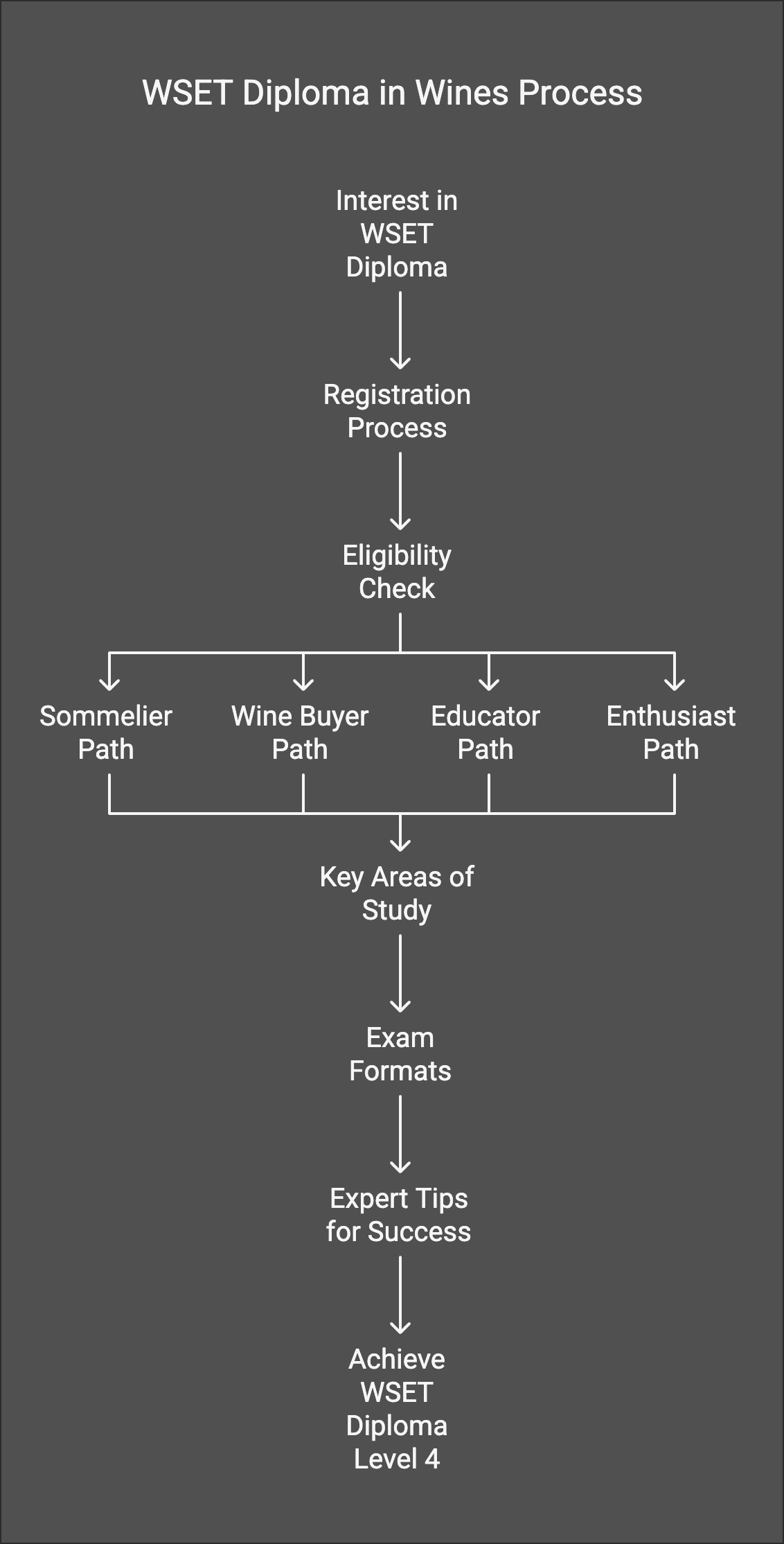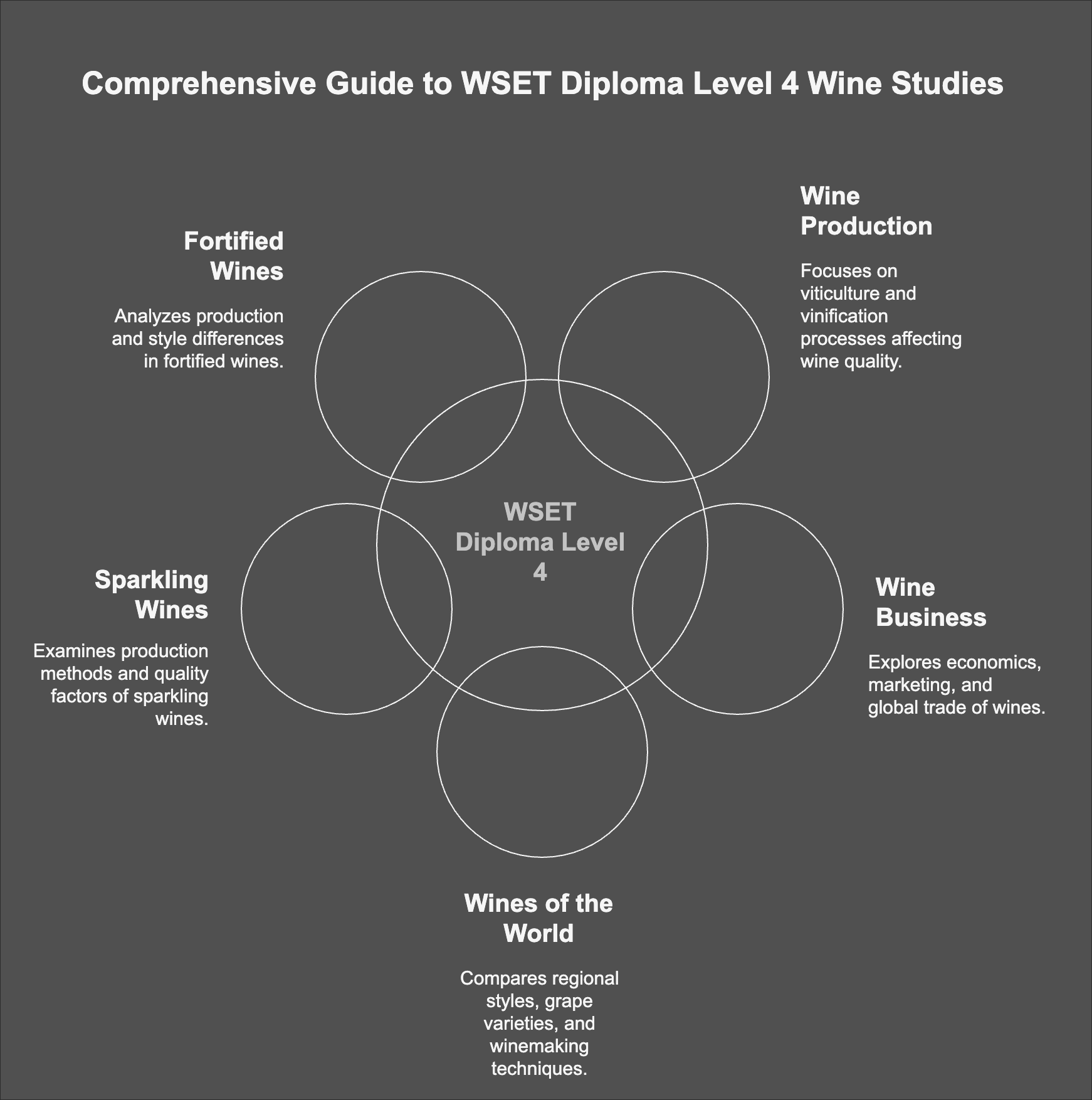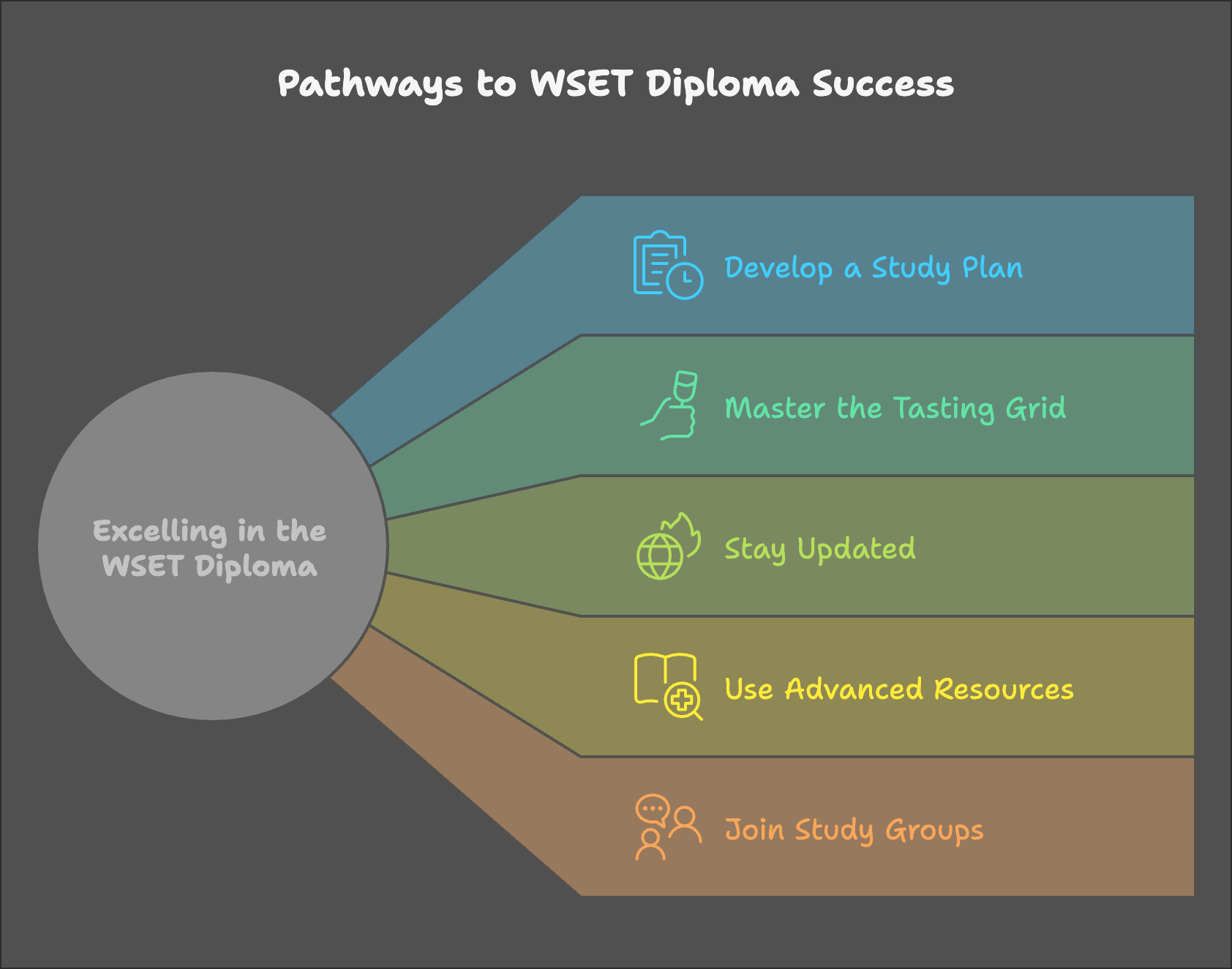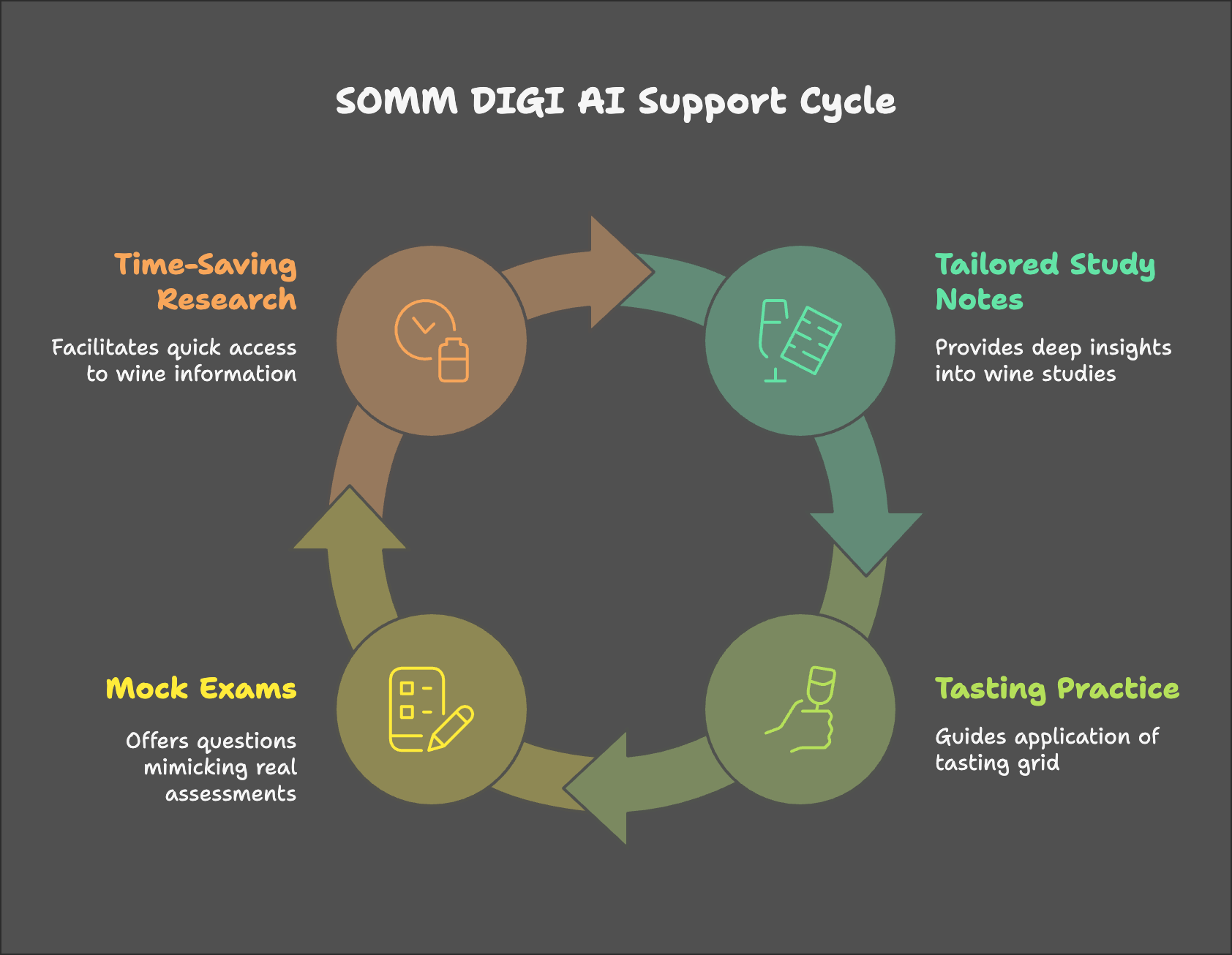WSET Diploma: Guide to Earning Level 4 Certification
If you are serious about advancing your wine education and career, the WSET Diploma in Wines (WSET Diploma Level 4) is a prestigious qualification that can set you apart in the wine industry.
This comprehensive guide will walk you through the entire process of registering for the WSET Diploma, including requirements, key areas of study, exam formats, and expert tips for success.
Whether you’re a sommelier, wine buyer, educator, or wine enthusiast, this guide will help you understand the WSET Diploma Level 4 and how to excel in this globally recognized certification.
What is the WSET Diploma in Wines?
The WSET Diploma in Wines is an advanced-level qualification that builds on the knowledge gained in WSET Level 3. It is one of the most respected wine certifications in the world and a stepping stone to becoming a Master of Wine (MW). The program provides in-depth knowledge of wine production, business, and analytical tasting.
Requirements to Register for the WSET Diploma
1. Prerequisites
WSET Level 3 Award in Wines: You must pass Level 3 before applying for the Diploma.
English Proficiency: The course is in English, requiring strong reading and writing skills.
Time Commitment: Expect 600+ study hours over 18–24 months.
2. Choosing an Approved Program Provider (APP)
The WSET Diploma Level 4 is available through Approved Program Providers (APPs) worldwide. Choose based on location, budget, and study format (online or in-person).
3. Registration Process
Visit the website of your chosen APP.
Submit the registration form and proof of WSET Level 3 certification.
Pay the course fees (£3,000–£6,000 depending on location and provider).
Gain access to study materials and schedules.
Key Areas of Study in the WSET Diploma
The WSET Diploma Level 4 consists of six units (D1–D6):
D1: Wine Production
Topics: Viticulture, vinification, maturation, and bottling.
Key Focus: The impact of natural and human factors on wine quality and style.
Example Question: How does fermentation vessel choice (stainless steel vs. oak) affect wine style and quality?
D2: Wine Business
Topics: Wine production economics, marketing, and supply chain.
Key Focus: Understanding global wine trade and pricing.
Example Question: Evaluate how supply chain decisions impact premium wine pricing.
D3: Wines of the World (Largest Unit)
Topics: Wine regions, grape varieties, and winemaking techniques.
Key Focus: Comparing styles, quality, and pricing.
Example Question: Compare Pinot Noir from Burgundy vs. Central Otago.
D4: Sparkling Wines
Topics: Traditional and tank method production, key regions.
Key Focus: Factors influencing sparkling wine quality.
Example Question: Explain how lees aging affects traditional method sparkling wines.
D5: Fortified Wines
Topics: Sherry, Port, Madeira production and styles.
Key Focus: Influence of fortification timing and aging on style.
Example Question: Compare the production of Fino Sherry and Tawny Port.
D6: Independent Research Assignment
Topics: A 3,000-word research paper on a wine-related topic.
Example Question: Analyze the impact of climate change on Napa Valley wines.
Exam Format for the WSET Diploma
1. Written Exams
Units D1, D2, D3, D4, and D5 feature essay-style questions.
Example Question: Evaluate the impact of climate change on Bordeaux viticulture.
2. Tasting Exams
Units D3, D4, and D5 include blind tastings.
Example Task: Identify the style, quality, and origin of a wine based on sensory evaluation.
3. Research Assignment (D6)
A 3,000-word paper on a wine-related topic.
Example Topic: The influence of e-commerce on the global wine industry.
4. Grading System
Units are graded as Pass, Merit, or Distinction.
All six units must be passed to earn the WSET Diploma Level 4.
Tips for Excelling in the WSET Diploma
Develop a Study Plan: Allocate time for each unit and stick to a schedule.
Master the Tasting Grid: Practice blind tasting regularly.
Stay Updated: Follow wine industry news and trends.
Use Advanced Resources: Read books, journals, and attend tastings.
Join Study Groups: Reinforce learning with peer discussions.
How SOMM DIGI AI Can Help You Succeed
SOMM DIGI AI is an advanced AI assistant designed for WSET Diploma students. It provides:
Tailored Study Notes: Deep insights into viticulture, winemaking, and wine law.
Tasting Practice: Guidance on WSET tasting grid application.
Mock Exams: Questions that mimic WSET Diploma Level 4 assessments.
Time-Saving Research: Quick access to information on wine regions, producers, and vintages.
Why Pursue the WSET Diploma?
Career Advancement: Open doors to roles like wine buyer, educator, or consultant.
Global Recognition: A respected qualification in the international wine industry.
Personal Growth: Enhance your wine knowledge and appreciation.
Conclusion
Earning the WSET Diploma Level 4 is a major step toward achieving your wine career goals. By understanding the requirements, study areas, and exam formats, and leveraging tools like SOMM DIGI AI, you can excel in this challenging but rewarding program.
If you're ready, start by researching Approved Program Providers (APPs) and begin your journey toward the WSET Diploma today. And don’t forget to explore SOMM DIGI AI to maximize your success!




